Data is the ultimate modern solution to modern problems.
But what happens when this solution itself becomes a problem? Yes, we are talking about Data Silos.
Chaotic and unorganized spreadsheets with mismatched data can be the cause of friction between teams. Unaligned teams are the ultimate barrier to an organization-wide success.
Siloed data acts as an obstacle to important decisions. So knowing what causes data silos and how to get rid of it will automatically give your business a differentiator.
What are Data Silos?
Data silos refer to isolated pockets or repositories of data within an organization that are inaccessible or not easily shared with other parts of the organization.
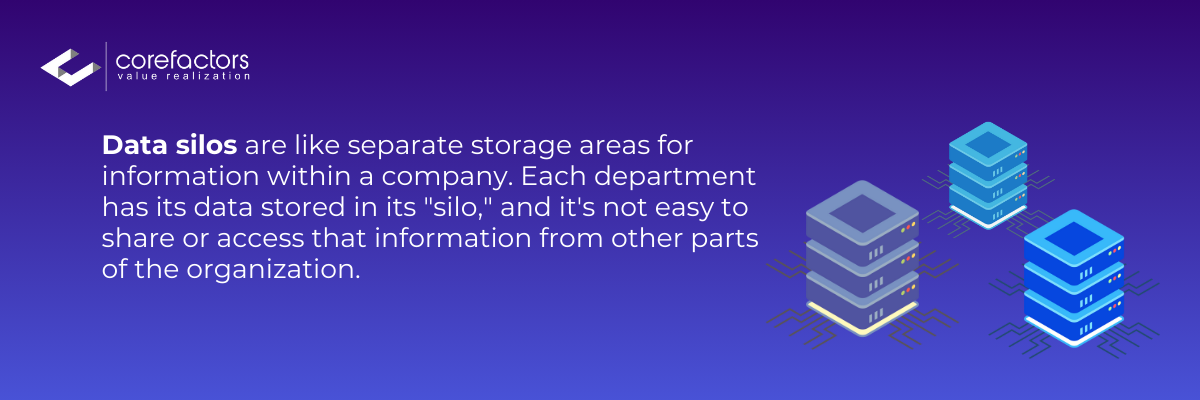
Many organizations face the challenge of siloed data that hinders efficient data management and collaboration and ultimately affects the decision-making process.
Data silos occur when data is isolated within specific departments, systems, or applications, making it difficult for other parts of the organization to access or utilize that information.
Data isolation can also occur when your business's data collection tool is isolated from the rest of your tech stack.
How do Data Silos Occur?
Data silos can emerge in businesses due to a variety of interconnected reasons, ranging from organizational structure and culture to technological limitations. Here's a comprehensive exploration of the key reasons why a business is suffering from the problems caused by data silos.
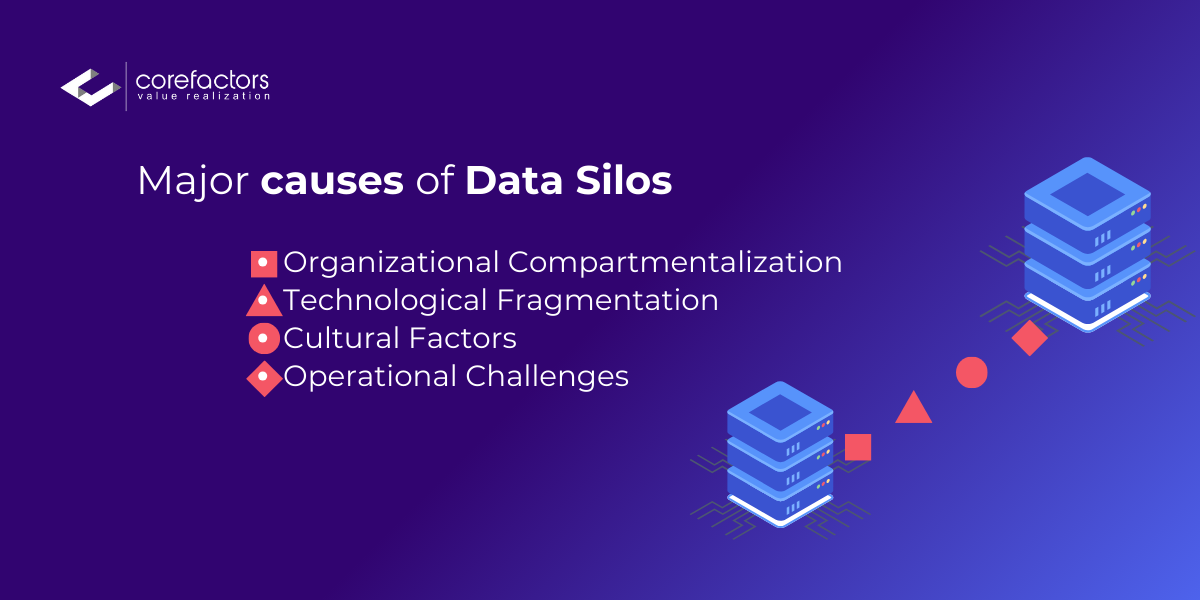
- Organizational Compartmentalization
Many businesses are organized into functional departments such as finance, marketing, sales, and operations. Each department often develops systems, processes, and databases tailored to its specific needs, without integrating them into a centralized database. As a result, data becomes compartmentalized within each department, leading to silos.
Hierarchical structures can exacerbate data silos, as decision-making authority and information flow may be centralized at the top, limiting cross-departmental collaboration and data sharing.
2. Technological Fragmentation
Businesses may rely on outdated or legacy systems that need more interoperability with newer technologies. Legacy systems often have rigid structures and limited integration capabilities, making it challenging to share data across platforms.
Moreover, different departments may adopt varying software solutions based on their unique requirements, resulting in a fragmented technology landscape. Incompatible systems make it difficult to exchange data seamlessly, contributing to the formation of silos.
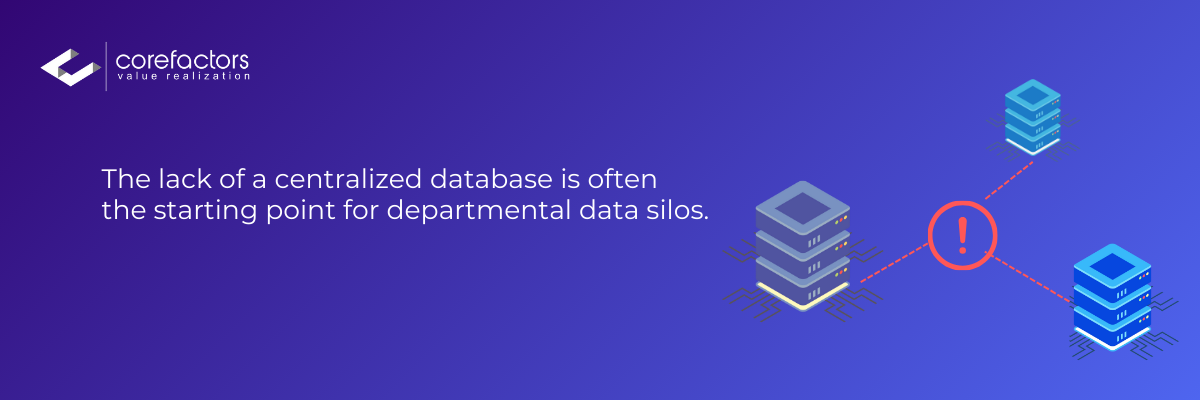
Even within modern technology infrastructures, data may be stored in different formats, locations, or databases, making it challenging to aggregate and analyze information cohesively. The lack of a centralized database is often the starting point for departmental data silos.
3. Cultural Factors
In some organizations, there may be a cultural reluctance to share data across departments or teams. This could stem from a perception of data ownership or a lack of trust in other department's ability to handle sensitive information.
Employees may resist efforts to break down data silos due to fear of losing control over their data or changes to established workflows. Internal competition often gives rise to gatekeeping.
Addressing data silos requires a cultural shift towards collaboration, transparency, and data-driven decision-making.
4. Operational Challenges
For businesses with multiple locations or global operations, geographical dispersion can exacerbate data silos. Physical distance and different time zones may hinder communication and collaboration efforts, leading to isolated pockets of data.
When companies merge or acquire other businesses, they often inherit disparate systems and data architectures. Integrating data from different entities presents significant challenges and may perpetuate existing silos.
Why are Data Silos Bad for Business?
Data silos pose significant challenges to businesses across various aspects of operations and decision-making.
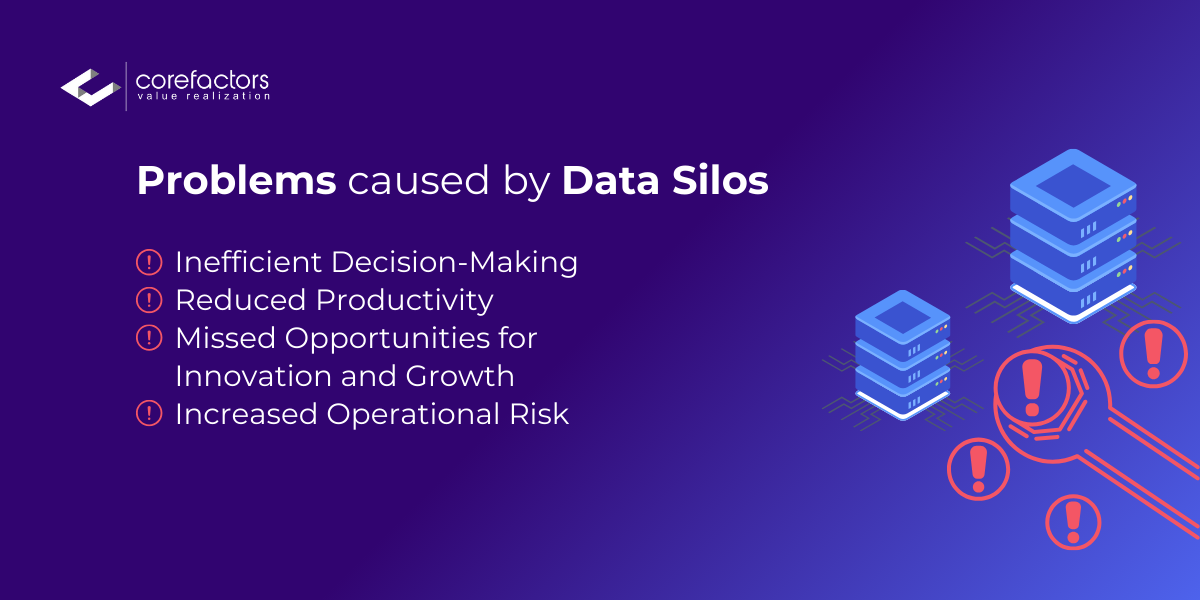
- Inefficient Decision-Making
Data silos inhibit the ability to make informed decisions based on a comprehensive view of the organization's data. When data is isolated within silos, decision-makers lack access to the complete picture, leading to suboptimal or uninformed choices.
Decision-making may get delayed or compromised without a unified view of data from across the organization. This will impact your company's ability to respond effectively to market changes or emerging opportunities.
Data-driven decision-making is the norm now. How can leaders decide if the data required is faulty or inaccessible?
2. Reduced Productivity
Accessing and reconciling data from disparate sources within silos is a time-consuming and labor-intensive process. Your employees may spend significant time manually gathering and integrating data, reducing productivity. This time could have been spent on something more productive.
Moreover, duplication of efforts is common within siloed environments, as different departments may independently collect and store similar data, leading to redundant work and wasted resources.
3. Missed Opportunities for Innovation and Growth
Insights and opportunities might remain hidden within siloed data. This untapped information can limit your organization's ability to innovate and capitalize on market trends.
By breaking down data silos and enabling cross-functional collaboration, you can leverage your data assets more effectively to drive innovation, identify new revenue streams, and gain a competitive edge in the marketplace.
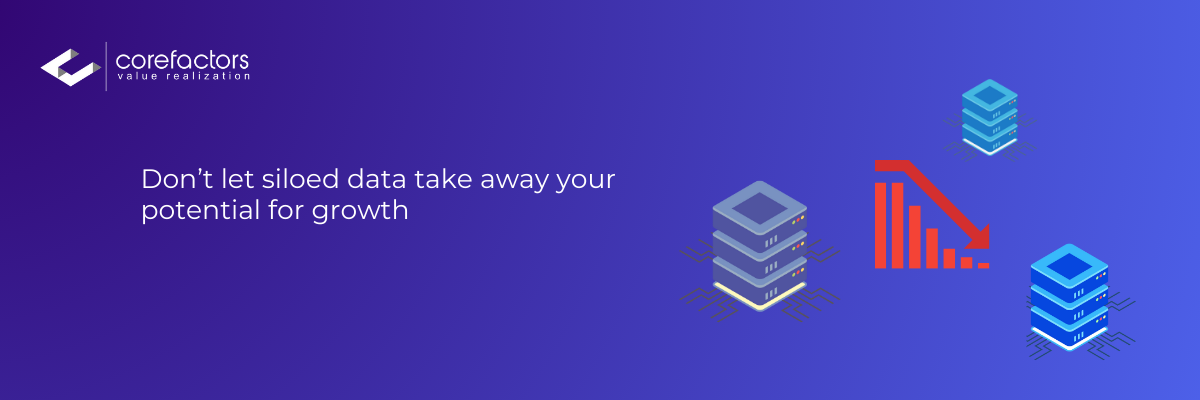
4. Increased Operational Risk
Data silos can pose security risks, as sensitive information may be more vulnerable within fragmented systems with inconsistent security measures.
Inadequate data governance practices within siloed environments may result in compliance violations, data breaches, or other regulatory issues, exposing your business to legal and reputational risks.
Instead of a centralized database such as a customer relationship management system, if your employees are storing customer data on spreadsheets and other documents on their devices, security is at risk.
5. Bad Customer Experience
Siloed data can lead to disjointed and inconsistent customer experiences, as different departments have limited visibility into customer interactions and preferences. Throughout their journey, customers interact with different teams - sales, marketing, customer support, and service.
Data silos can lead to these teams not having the complete picture of the customer journey. In this scenario, a business might end up having a frustrated customer who has had to repeat themselves to different team members.
By integrating data from across the organization, businesses can gain a unified view of customer data, enabling personalized and seamless experiences that drive customer satisfaction and loyalty.
RevOps: Break Data Silos
RevOps, short for Revenue Operations, is a strategic approach that aligns marketing, sales, and customer success teams to drive revenue growth and enhance customer experience.
While RevOps primarily focuses on optimizing revenue-related processes and workflows, its principles and methodologies can also be instrumental in breaking down data silos within organizations.
Corefactors is a RevOps-enabling CRM that promises zero revenue leakage. It does so by curbing data silos and syncing customer-facing teams. The table below explores how the problems created by data silos can be solved via a RevOps-enabling platform like Corefactors.
RevOps drives alignment, efficiency, and collaboration across marketing, sales, and customer success functions, ultimately breaking down data silos and enabling organizations to optimize revenue growth and enhance customer experience.
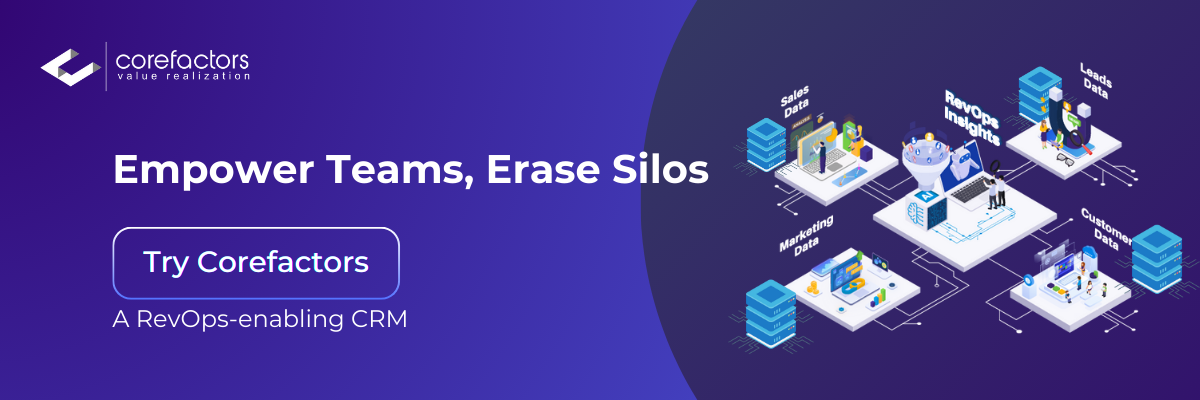
Frequently Asked Questions (FAQs)
What is meant by data silos?
Data silos are like separate storage spaces for data within a company. They happen when data isn't shared easily between departments because they use different systems or don't work together well.
Why is data silo bad for business?
Siloed data hurts team productivity and decision-making. It increases operational risk and leads to a bad customer experience. Businesses often miss opportunities for growth because of data silos.
What is RevOps?
RevOps, short for Revenue Operations, is a strategic approach that aligns marketing, sales, and customer success teams to drive revenue growth and enhance customer experience.
How does RevOps handle data silos?
RevOps aligns and fosters a spirit of collaboration across marketing, sales, and customer success functions, ultimately breaking down data silos







